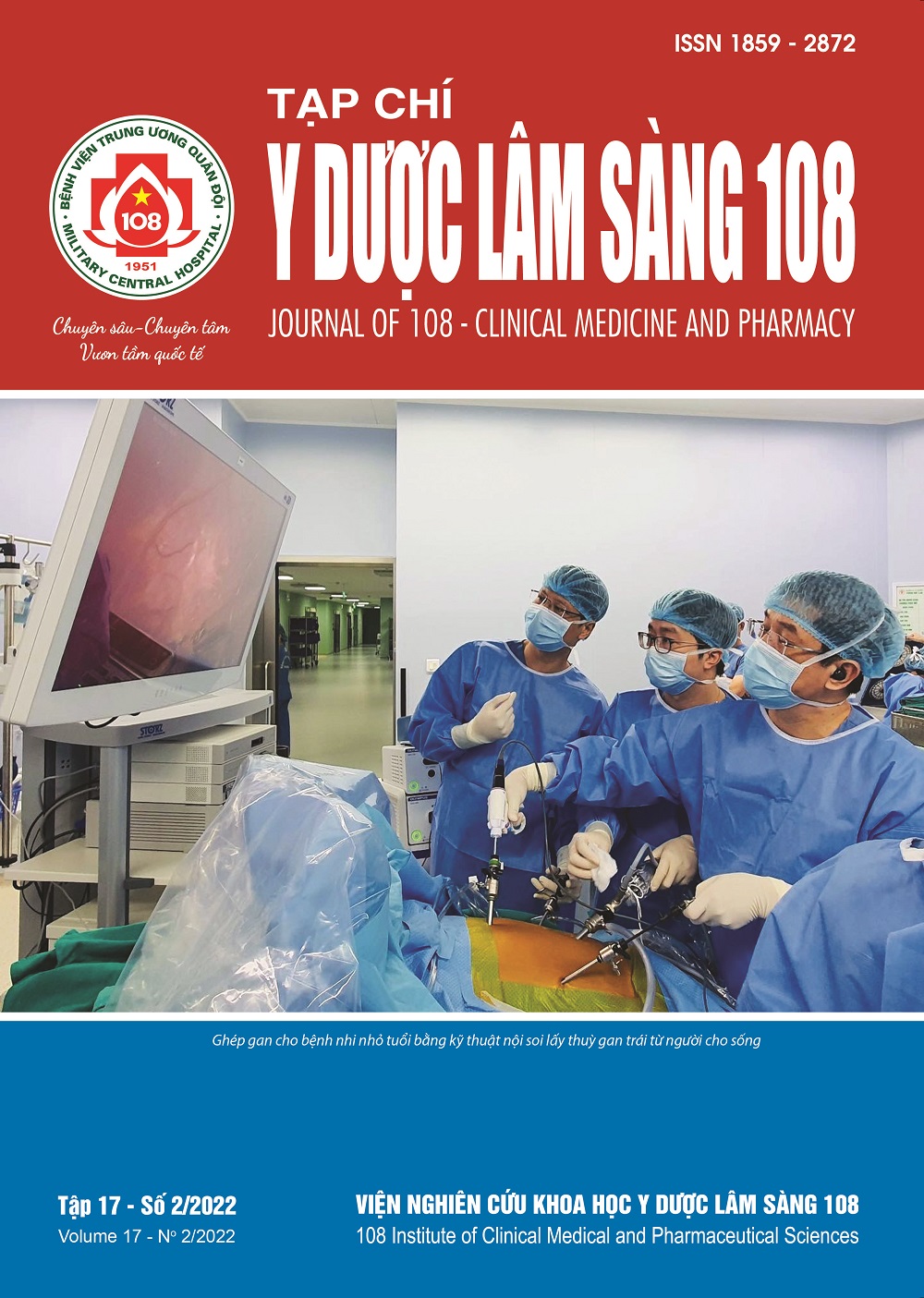Situation of care for cirrhosis patients at 108 Military Central Hospital in 2021
Main Article Content
Keywords
Abstract
Objective: To describe some clinical characteristics and care of patients with cirrhosis of the liver. Subject and method: A prospective, cross-sectional study was carried out on 139 cirrhosis patients who were cared for and treated at the Institute of Gastroenterology and Hepatology, 108 Military Central Hospital, from February 2021 to December 12/2021. Result: Male accounted for 83.45%, male/female ratio was 5.05/1. The middle age group accounted for the highest percentage, the average age was 60.65 ± 11.14 years. The biggest cause leading to cirrhosis was alcohol, accounting for 55.40%; followed by the cause of hepatitis B accounted for 28.06%. Typical clinical signs such as jaundice, yellow eyes accounted for 91.36%, abdominal distension 81.29%, gastrointestinal bleeding 76.25%. Cirrhosis admitted to the hospital according to Child-Pugh's classification at grade B (moderate) accounted for the highest rate of 52.52%. The majority of patients ate a combination of oral and gastric tube, accounting for 99.28%, 84.89% of patients did not see any eating abnormalities. 100% of patients were monitored for blood transfusion; The process of monitoring vomit and feces daily accounted for only 92.45%. Basic care and monitoring activities accounted for the largest proportion, which is the implementation and monitoring of epidemics and drugs under medical orders 97.12%; tracking needle injection site 96.40%; activities accounted for the rate of performing tests only 82.73%. Conclusion: Patients admitted to the hospital in a state of high decompensated cirrhosis, nutritional care helps to improve their physical condition, and correct general care activities account for 89.93%.
Article Details
References
2. Dương Văn Long (2013) Nghiên cứu một số đặc điểm lâm sàng và huyết học trên bệnh nhân xơ gan tại Bệnh viện đa khoa Xanh - Pôn năm 2011 – 2012. Khóa luận tốt nghiệp bác sĩ đa khoa, Trường Đại học Y Hà Nội, tr. 38.
3. Nguyễn Phương Nhung (2020) Chất lượng cuộc sống và một số yếu tố liên quan trên bệnh nhân xơ gan điều trị tại Trung tâm Bệnh nhiệt đới, Khoa Tiêu hóa - Bệnh viện Bạch Mai. Luận văn Thạc sĩ Điều dưỡng, Trường Đại học Thăng Long.
4. Nguyễn Chiến Thắng (2016) Nghiên cứu đặc điểm lâm sàng và cận lâm sàng của bệnh nhân xơ gan tại Bệnh viện Đại học Y Hà Nội năm 2014. Khóa luận tốt nghiệp bác sĩ đa khoa, Trường Đại học Y Hà Nội, tr. 35-58.
5. WHO (2008) Phân loại bệnh quốc tế lần thứ 10 về các rối loạn tâm thần và hành vi. Viện Sức khỏe tâm thần Trung ương.
6. Plauth M (2019) Nutrition in liver cirrhosis: Clinical practice recommendations. Dtsch Med Wochenschr 144(18): 1267-1274.
7. de Franchis R, Bosch J, Garcia-Tsao G, Reiberger T, Ripoll C; Baveno VII Faculty (2022) Baveno VII - Renewing consensus in portal hypertension. J Hepatol 76(4): 959-974.
8. Schulz KH, Kroencke S, Ewers H et al (2008) The factorial structure of the Chronic Liver Disease Questionnaire (CLDQ). Qual Life Res 17(4): 575-84.
9. Smith A, Baumgartner K, Bositis C (2019) Cirrhosis: diagnosis and management. Am Fam Physician 100(12): 759-770.
 ISSN: 1859 - 2872
ISSN: 1859 - 2872
